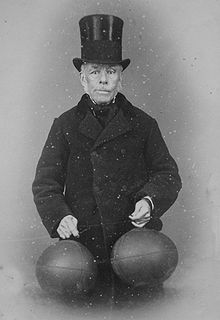
A ball is a round object with several uses. It is used in ball games, where the play of the game follows the state of the ball as it is hit, kicked or thrown by players. Balls can also be used for simpler activities, such as catch or juggling. Balls made from hard-wearing materials are used in engineering applications to provide very low friction bearings, known as ball bearings. Black-powder weapons use stone and metal balls as projectiles.
A football is a ball inflated with air that is used to play one of the various sports known as football. In these games, with some exceptions, goals or points are scored only when the ball enters one of two designated goal-scoring areas; football games involve the two teams each trying to move the ball in opposite directions along the field of play.

Nerf is a toy brand formed by Parker Brothers and currently owned by Hasbro. Most of the toys are a variety of foam-based weaponry, with other Nerf products including balls for sports such as American football, basketball, and baseball. Their best known toys are their dart guns that shoot ammunition made from "Nerf foam". Their primary slogan, introduced in the 1990s, is "It's Nerf or Nothin'!". Annual revenues under the Nerf brand are approximately US$400 million.

A water polo ball is a ball used in water polo and canoe polo, usually characterized by a bright yellow color and ease of grip ability, so as to allow it to be held with one hand despite its large size.

A baseball is the ball used in the sport of baseball. It consists of a rubber or cork center wrapped in yarn and covered with white natural horsehide or cowhide, or a synthetic composite leather. A regulation baseball is 9 to 9.25 inches in circumference i.e. 2.86 to 2.94 inches in diameter, with a weight of 5 to 5.25 ounces.
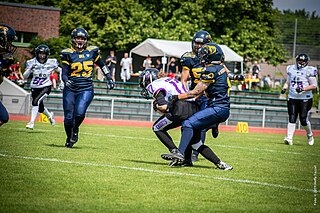
American and Canadian football are gridiron codes of football that are very similar; both have their origins partly in rugby football, but some key differences exist between the two codes.

The Wilson Sporting Goods Company is an American sports equipment manufacturer based in Chicago, Illinois. Wilson makes equipment for many sports, among them baseball, badminton, American football, basketball, fastpitch softball, golf, racquetball, soccer, squash, tennis, pickleball and volleyball.

A rugby ball is an elongated ellipsoidal ball used in both codes of rugby football. Its measurements and weight are specified by World Rugby and the Rugby League International Federation, the governing bodies for both codes, rugby union and rugby league respectively.

Rawlings Sporting Goods is an American sports equipment manufacturing company based in Maryland Heights, Missouri. Founded in 1887, Rawlings currently specializes in baseball and softball clothing and equipment, producing gloves, bats, balls, protective gear, batting helmets, uniforms, bags. Footwear includes sneakers, and sandals. The company also sells other accessories such as belts, wallets, and sunglasses. Former products manufactured by Rawlings included American football, basketball, soccer, and volleyball balls.

Sherrin is a brand of football used in Australian rules football and is the official ball of the Australian Football League, designed to its official specifications. It was the first ball designed specifically for the sport.

Spalding is an American sports equipment manufacturing company. It was founded by Albert Spalding in Chicago in 1876 as a baseball manufacturer, and is today headquartered in Bowling Green, Kentucky. It sells softballs through its subsidiary Dudley Sports. In the past, Spalding has manufactured balls for other sports, including American football, soccer, volleyball, tennis, and golf.
The 2006 NFL season was the 87th regular season of the National Football League (NFL). Regular season play was held from September 7 to December 31, 2006.

A football is the ball used in the sport of association football. The name of the ball varies according to whether the sport is called "football", "soccer", or "association football". The ball's spherical shape, as well as its size, weight, mass, and material composition, are specified by Law 2 of the Laws of the Game maintained by the International Football Association Board. Additional, more stringent standards are specified by FIFA and other big governing bodies for the balls used in the competitions they sanction.
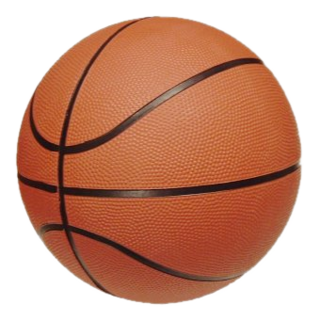
A basketball is a spherical ball used in basketball games. Basketballs usually range in size from very small promotional items that are only a few inches in diameter to extra large balls nearly 2 feet (60 cm) in diameter used in training exercises. For example, a youth basketball could be 27 inches (69 cm) in circumference, while a National Collegiate Athletic Association (NCAA) men's ball would be a maximum of 30 inches (76 cm) and an NCAA women's ball would be a maximum of 29 inches (74 cm). The standard for a basketball in the National Basketball Association (NBA) is 29.5 inches (75 cm) in circumference and for the Women's National Basketball Association (WNBA), a maximum circumference of 28.5 inches (72 cm). High school and junior leagues normally use NCAA, NBA or WNBA sized balls.
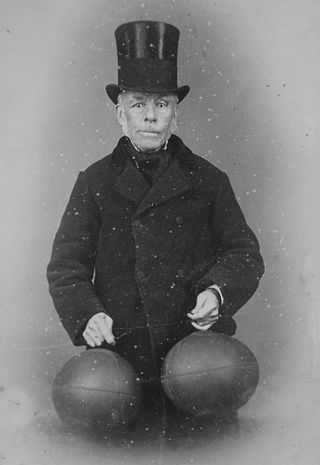
Richard Lindon was an English leatherworker who was instrumental in the development of the modern-day rugby ball by advancing the craft for ball, rubber bladder, and air pump.

A volleyball is a ball used to play indoor volleyball, beach volleyball, or other less common variations of the sport. Volleyballs are spherical in shape and typically comprise eighteen nearly rectangular panels made from synthetic or genuine leather. These panels are organized into six identical sections, each consisting of three panels. They are carefully wrapped around a bladder to form the complete volleyball. A valve permits the internal air pressure to be adjusted. In a break from the traditional construction, in 2008, the FIVB adopted as its official indoor ball a new Mikasa with dimples and only eight panels for a softer touch and truer flight.
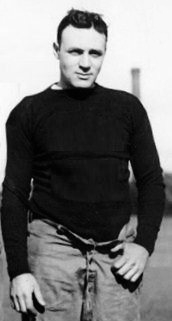
Ralph Horween was an American football player and coach. He played fullback and halfback and was a punter and drop-kicker for the unbeaten Harvard Crimson football teams of 1919 and 1920, which won the 1920 Rose Bowl. He was voted an All-American.
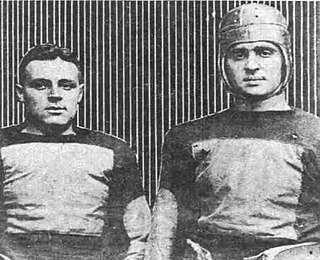
Arnold Horween was an American college and professional American football player and coach. He played and coached both for Harvard University and in the National Football League (NFL).

Horween Leather Company is an American company specializing in the manufacturing and refining of leather and related products. It is one of the oldest continuously running tanneries in the United States of America. Since its founding in the early 20th century it has been located in Chicago.

Comparison of association football (football/soccer) and rugby union is possible because of the games' similarities and shared origins.

